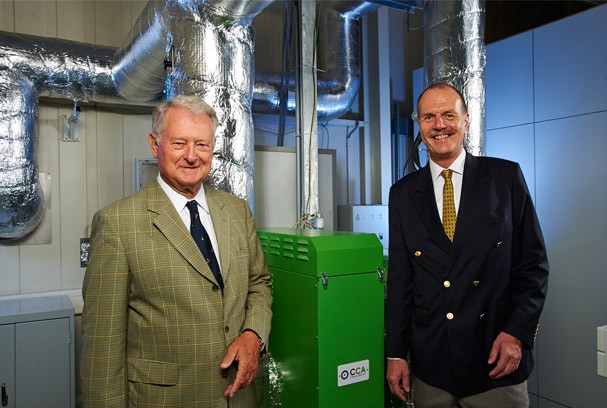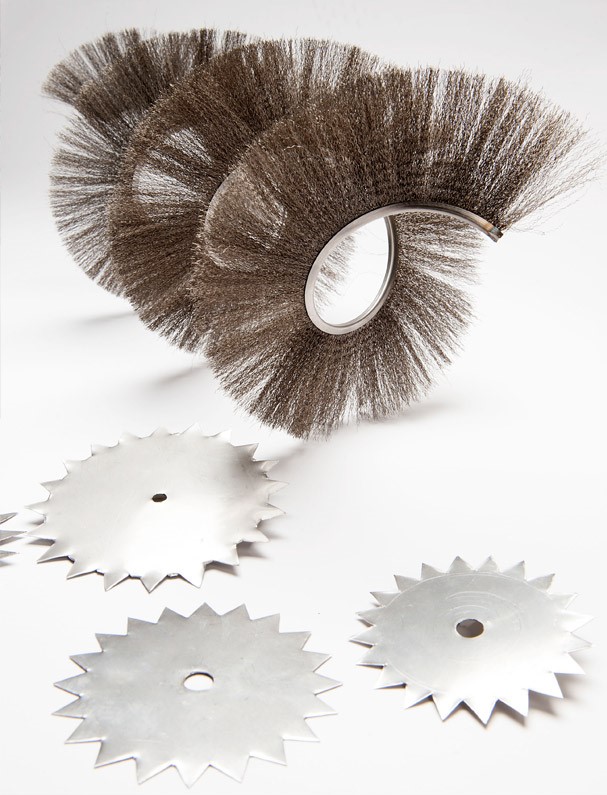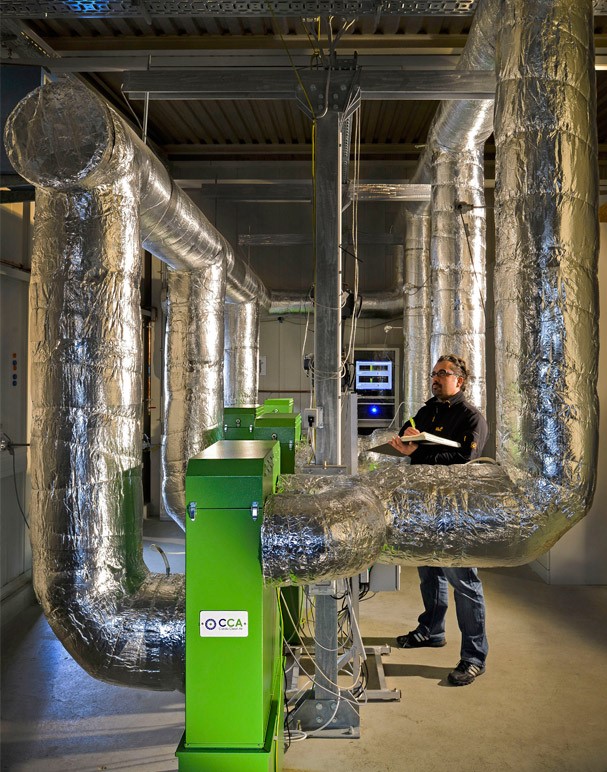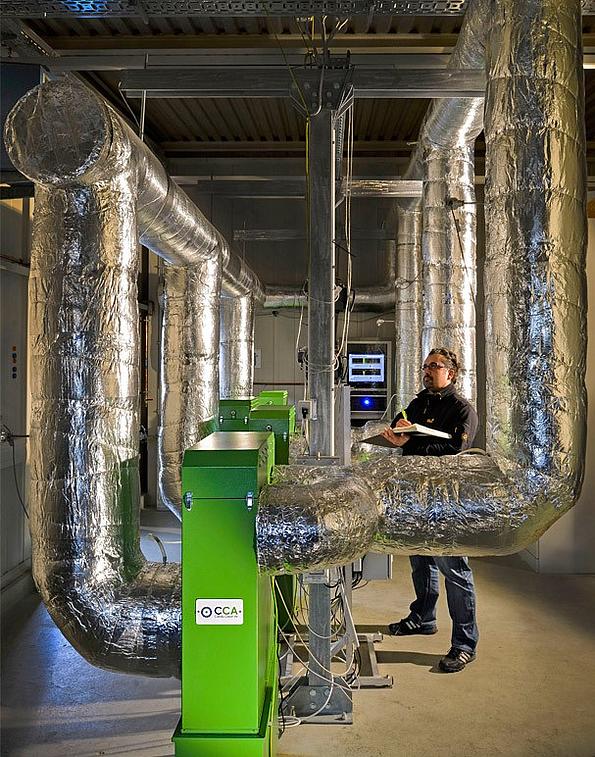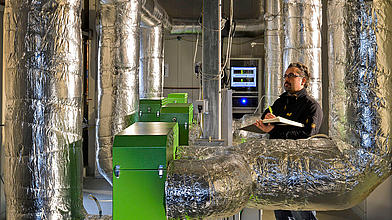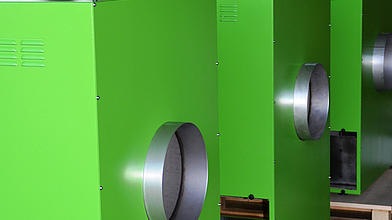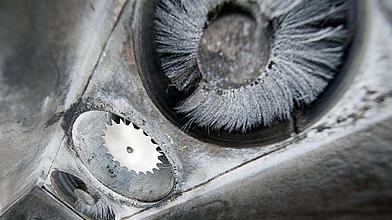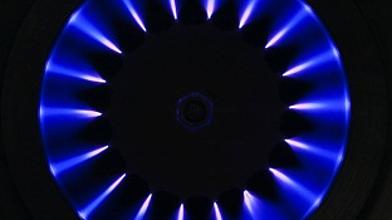How KIT spin-off Carola Clean Air GmbH fights fine dust in the air with special filters for wood furnaces.
Comfortable warmth on cold winter days is something we take for granted. The individual feel-good temperature can be created with a quick flick of the wrist. However, anyone who ventures from the sofa in the living room into the boiler room will realize that behind the degrees Celsius lies a complex technical system. At the latest, when the heating breaks down, the coziness comes to an end. But even when the heating is running, there are some reasons to think about the side effects of heat.
"Wood-burning systems can emit more harmful particulate matter on cold winter days than the entire inner-city traffic," says Dr. Hanns-Rudolf Paur, a scientist at KIT and co-founder of Carola Clean Air GmbH, or CCA for short. The fact that high fine dust pollution from wood heaters shortens life expectancy has not yet penetrated the public consciousness. Thereby, according to the Federal Environment Agency, there are 15 million small to medium-sized wood-based combustion systems, such as fireplaces or boilers for pellets or wood chips *.
"We are proud that our research is not just on paper, but is finally making clean wood combustion possible as a successful innovation."
Legislators are aware of the problem. Stricter limits for small and medium-sized combustion plants were set in 2010 with an amendment to the Emmission Control Ordinance, and these limits were tightened even further in a second stage on January 1, 2015. Now it's the turn of boiler manufacturers, who in the future will have to supply systems that meet the legal requirements and emit significantly less particulate matter than their previous products. "This requires a rethinking and a technical changeover for an entire industry," says Hans Rheinheimer, Ph.D., Managing Director of CCA: "This changeover is a challenge with a high degree of technical complexity that cannot be mastered in a short period of time." As in the case of diesel soot filters in cars, the combination of clean combustion and filtering of the outflowing exhaust gases promises the greatest chance of success. The KIT team of scientists headed by Dr. Paur had already started research on flue gas purification at the turn of the millennium and thus had the decisive edge in knowledge. The chemist remembers: "It was already clear at that time that furnaces strongly pollute the environment and that future limit values cannot be complied with by combustion technology measures alone. As scientists, we wanted to do something about it."
Gradually, the team developed so-called Carola separators, which reduce the fine dusts produced during the combustion of solids by up to 90 percent. "Our separators work with a process we invented and patented. The resulting soot particles are electrically charged and then collected in a collector. No external electric field is required to separate the charged particles in the collector. A spiral brush that rotates at intervals cleans the collector automatically, and the separated soot is collected in a collection container. The filter has no effect on combustion in the boiler," explains Dr. Paur.
After tests on prototypes met expectations, boiler manufacturers and investors also became aware of the market potential of the promising technology. "Investing in the technology and thus founding a company out of KIT was therefore a logical step," says managing director Dr. Rheinheimer, who, as an experienced industrial manager, represents the private investor in the young company. With first pilot customers, the separators will now be further developed to market maturity. For the scientists, their considerations on the ideal flue gas cleaning system have come up against real boundary conditions of the market economy. Customer needs, plant size, product price, competition and many other influencing factors have led to the current product range: Flue gas separators that can be installed both as an integrated part of a boiler and as a retrofit option in a variety of systems, ranging in capacity from 25 to 400 kilowatts.
The industry is still hesitant, but the KIT founders have long-term plans, according to Paur: "In the future, wood-fired systems will be subject to increasingly stringent limits to protect human health. We are also thinking about many other applications for our technology. Numerous inquiries from all over the world show us: particle separation in the domestic sector is a huge market that will develop globally in the long term."
*As of 2010, source www.umweltbundesamt.de/themen/wirtschaft-konsum/industriebranchen/feuerungsanlagen/kleine-mittlere-feuerungsanlagen
